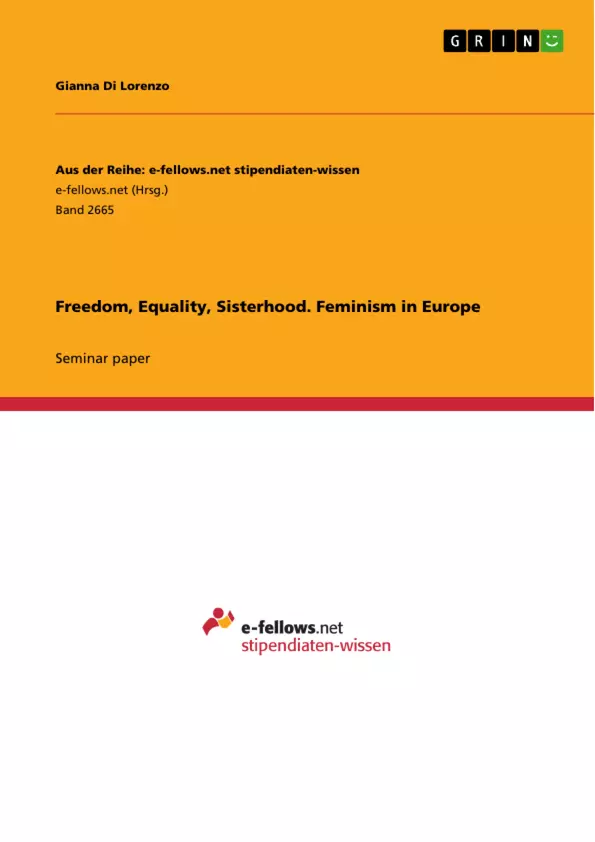The term “feminism” describes a movement advocating the requirements of women and towards a change in society in favor of females. Following back this movement one can find that it is not a newly upcoming trend but an ever-existing wish for equality between men and women. Today, many people talk about feminism as already given in our society but the question is whether exactly this can be a danger for women due to the widespread belief in equality which differs from reality.
This paper presents a detailed analysis containing not only history and important achievements but also feminism nowadays as well as the importance of the term "gender mainstreaming". Limitations and chances of today's feminism movement will be brought up too to formulate an idea of equality.
Frequently asked questions
What is the main topic of this document?
This document is a comprehensive language preview that analyzes themes in a structured and professional manner, focusing on feminism, its development, current discourse, and its relevance in Europe.
What are the key topics covered in the Table of Contents?
The Table of Contents outlines the following key topics: Introduction and research question, Development lines of feminism, The current discourse on feminism, Europe and feminism - a contradiction?, and Freedom, Equality, Sisterhood - Mission (Im)possible?
Who are some of the key figures mentioned in the development of feminism?
Key figures mentioned include Olympe de Gouges, Simone de Beauvoir, Soujouner Truth, Alice Schwarzer, Hedwig Dohm and Louise Otto-Peters.
What are some of the important achievements of feminism highlighted in the text?
Important achievements include the allowance for women to participate in studies at universities, the abatement of laws that gave men the final say in marriage decisions, the development of abortion laws, and the introduction of the right to vote for women.
What does the document say about the current discourse on feminism?
The document discusses the emergence of a new wave of feminism, influenced by events like the election of President Trump and the subsequent Women's March. It also notes the role of social media in raising awareness of feminist issues.
How does the document view the relationship between Europe and feminism?
The document considers whether feminism is a contradiction in the context of Europe, discussing gender mainstreaming, feminism in language, and whether the movement sometimes goes too far.
What is "Gender Mainstreaming" as described in the document?
Gender Mainstreaming is defined as an international and political organizational strategy to avoid disadvantages for both sexes, with both sexes taking responsibility for mutual equality and justice.
What is the debate around Feminism in Language?
This involves equalizing words and expressions to end discrimination of women in language. Luise F. Pusch is mentioned as an early figure focusing on this in Germany. However, the text also questions whether this emphasis is an exaggeration.
What are some of the facts and figures presented regarding women's equality in Europe?
The documents shares that more women are graduating and forming half the working population, but that there is still a gender pay gap. That only 22.6% of executive management positions are filled by women and discusses balancing job and family.
What are the key themes of this text?
Key themes include the evolution of feminist thought, an analysis of the current state of feminist action, consideration of whether gender-focused interventions are necessary, and the future of gender equality.
- Quote paper
- Gianna Di Lorenzo (Author), 2017, Freedom, Equality, Sisterhood. Feminism in Europe, Munich, GRIN Verlag, https://www.grin.com/document/388725



